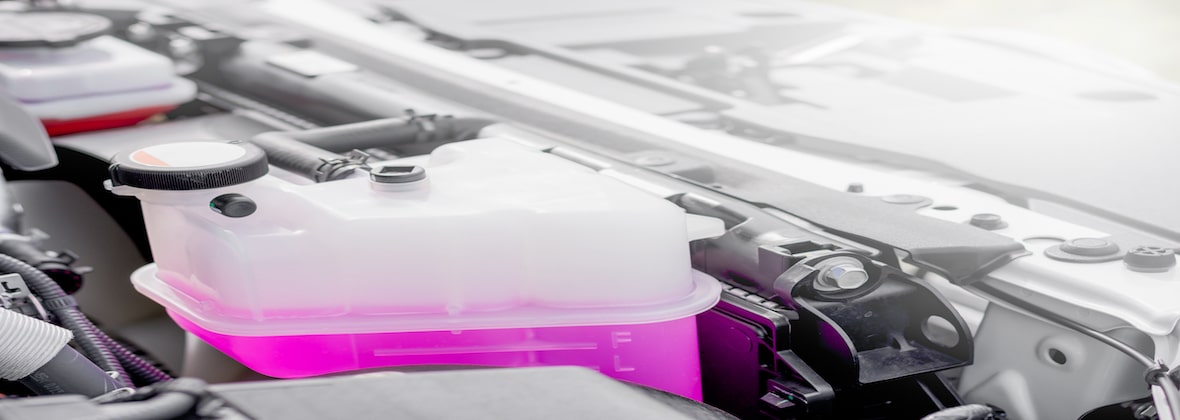
Your local dealer will get back to you within 24 hours with recommendations and to book an appointment.

The primary function of an engine’s cooling system is to remove the heat generated by the engine during the entire combustion process. In the lack of an efficient cooling system and the required coolant, the engine would overheat very quickly, thus affecting and damaging the critical components of the engine and vehicle as a whole.
Also known as antifreeze, engine coolant is a fluid that transfers heat and removes excess heat from the car’s engine. Engine coolant is made from a 50/50 ratio combination of water and ethylene or propylene glycol. These coolants are available in different types. When selecting an engine coolant for your car, it is better to go with the one mentioned in the owner’s manual for your specific vehicle.
Antifreeze or coolant is added to the car’s cooling system, which then circulates the fluid throughout the radiator and engine to avoid overheating. When a vehicle’s cooling system is functioning to its optimum, it reduces the heat production by the engine effectively.
It keeps the engine’s health in perfect shape, thus ensuring the smooth running of the vehicle. In the absence of regular coolant system flushes, the coolant system fails to work efficiently, causing the engine to overheat and eventual damage such as blown head gaskets, warped heads, and in severe conditions, engine failure.
The coolant needs flushing after a certain period as it deteriorates and fails to work effectively against freezing and boiling. Since a car’s engine has many parts that rust continuously, the coolant fluid collects debris and rust particles during circulation and deposits them in another part. Over time, the coolant also starts accumulating these particles, which leads to issues in its optimal performance. Now many amateur car keepers avoid getting fresh coolant till the damage is done. That’s why one of the most common reasons behind car breakdowns is radiator problems. Therefore, it is essential to watch out for signs to decide whether your car needs a coolant flush or not. Here are some indications:
The most common sign of a needed coolant flush is overheating of the engine. If the high-temperature gauge readings are above average, this is a definite sign that your car needs a coolant flush. The experts of TIRECRAFT also advise regular checking of the coolant levels to ensure that your car isn’t running on low coolant. You can do this on your own by
Many drivers complain of a gurgling noise from the engine. Mostly, the knocking, grinding, or gurgling sounds are due to the coolant flow in the heater. Thus, these noises are coming from hoses or coolant reservoir. But if you find enough coolant in the car, then you should check the thermostat.
Suppose the car emits a funny, sweet smell, something like a multipurpose cleaner or maple syrup. In that case, it is the sign of a coolant leak.
After some years, you will find fluid leakage from the car, and each of them signifies an entirely different meaning. The coolant or antifreeze leak is usually green, but the color can vary from yellow and pink to orange. You can confirm the leak by checking the antifreeze tank, and if it’s empty, you have the problem of a coolant leak.
During the process of a coolant flush, the old coolant is pushed out along with rust and debris. This simple process not only enhances the car’s life but also provides many other benefits like:
Over time, scale deposits and rust build up in the engine and radiator. A coolant flush removes these deposits as the old coolant and water are pushed out. Once these dust particles and scale deposits are removed, chances of engine overheating and radiator damage reduce considerably.
A coolant flush is way more than pushing out the old coolant. During the process, the mechanic also looks for any leaks that can damage the engine or radiator.
When new coolant is added, the additives in the antifreeze lubricate the water pump. This aids in the longer and better running of the water pump.
One of the most significant benefits of coolant flush is the removal of contaminants present in the existing coolant. These contaminants can be detrimental to the car’s health as their accumulation can lead to the loss of anti-corrosive properties of the coolant. Over time, it can lead to radiator corrosion and rust build-up.
With that being said, now you know what a coolant flush service is all about, so you should prioritize it and make it part of your regularly scheduled vehicle maintenance. Check the owner’s manual, or you can get coolant flush after every 50,000-100,000 KM in normal driving conditions and after every 30,000-50,000 KM in severe driving conditions. Call your local TIRECRAFT to book your next appointment.